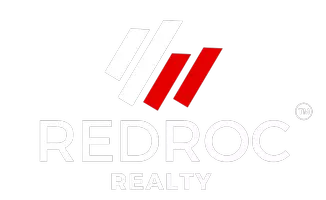Blog > Luxury Booms, Rentals Dip: What Miami’s Mixed Real Estate Signals Mean for You
Luxury Booms, Rentals Dip: What Miami’s Mixed Real Estate Signals Mean for You
by
Miami’s 2025 real estate market is sending mixed signals—and they’re important for anyone looking to buy, sell, or invest. On one hand, the luxury sector is booming, breaking records and drawing international buyers. On the other, rent prices are softening, condo inventory is rising, and affordability remains a pressing concern. Whether you're a first-time buyer, a seasoned investor, or a homeowner considering your next move, this landscape presents both opportunities and caution flags.
Ultra-Luxury Market: Skyrocketing Sales
Miami continues to be a magnet for high-net-worth individuals, with luxury properties seeing explosive growth. A Star Island estate recently sold for $120 million, the most expensive sale in Miami-Dade history. Another luxury project, DAMAC Bay 2 by Cavalli, offers residences priced at an average of $33 million—reflecting an insatiable appetite for branded, amenity-rich living.
What’s driving it?
- Favorable tax conditions (no state income tax)
- An influx of international buyers, particularly from Latin America and Europe
- A desire for lifestyle-oriented homes—think ocean views, private spas, and smart technology
What it means for you:
- Sellers of high-end properties are seeing shorter time on market and multiple offers
- Buyers need to act quickly and come prepared for premium pricing and limited inventory
- Investors in luxury rentals or resales can still find strong upside if location and amenities align with market demand
Rental Market: Signs of Cooling
While luxury sales are surging, Miami’s rental market is showing signs of recalibration. The average rent has dipped to $2,950, down approximately $350 from the previous year. Key neighborhoods like Brickell, Downtown, and Edgewater are leading this trend, due in part to a rise in new apartment complexes and multifamily buildings.
Why the shift?
- Increased supply from new developments
- A cooling of in-migration from other U.S. states
- Greater demand for homeownership due to rising rent fatigue
What it means for you:
- Renters may find better deals, especially in mid-luxury or older buildings
- Landlords should adjust pricing strategies and focus on amenities to stay competitive
- Investors need to monitor rental yields and vacancy rates carefully before entering the market
Condo Market: Rising Inventory
Miami-Dade’s condo inventory has risen by over 46%, with 11.1 months’ supply now available—pushing the market closer to balance. This trend stems from both new construction projects and slower absorption as buyers weigh options.
What’s happening?
- Rising interest rates have cooled condo demand slightly
- Some buyers are shifting to single-family homes or townhomes for more space and autonomy
- Investor resale listings have increased as short-term rental regulations evolve
What it means for you:
- Buyers now have more negotiating power—expect seller concessions or price flexibility
- Sellers must price competitively and consider strategic upgrades to stand out
- Investors can explore discounted units, especially in buildings with higher inventory
Emerging Neighborhoods: Brickell’s Ascendancy
Brickell has become Miami’s standout urban neighborhood in 2025. What was once a quiet financial district has evolved into a bustling, walkable, live-work-play hub, often compared to Manhattan’s Flatiron District.
What’s fueling the rise?
- Walkability and transit access
- A mix of luxury condos, global dining, and nightlife
- An increasing number of tech firms and startups relocating from California and NYC
What it means for you:
- Buyers get urban energy plus luxury perks—great for young professionals and digital nomads
- Investors find high rental demand and price growth potential
- Sellers in the area are benefiting from high turnover and market buzz
Other up-and-coming areas: Allapattah, Little River, and Edgewater
Affordable Housing: Still a Challenge
Affordable housing continues to be one of Miami’s biggest hurdles. While initiatives like The Anamar at Collins Park aim to provide homes for essential workers, critics argue that pricing remains too close to market rates to be genuinely accessible.
Key issues:
- High land and construction costs
- Delays in permitting and zoning
- Demand outpacing new supply
What it means for you:
- First-time buyers need to act fast when grant-supported or subsidized units appear
- Developers may benefit from incentives, but must balance cost and pricing
- Investors can explore value-add opportunities in emerging neighborhoods
Final Thoughts: Navigating a Shifting Landscape
Miami’s real estate market in 2025 is layered and fast-moving. With luxury soaring, rentals easing, and new development reshaping the map, the key to success lies in understanding your niche and aligning your strategy accordingly.
- Buyers: Take advantage of softening rent and condo prices, but act fast in luxury or top-tier neighborhoods.
- Sellers: Know your market’s pace—Brickell’s momentum is not the same as Sunny Isles’.
- Investors: Run the numbers, watch inventory, and consider value-rich neighborhoods poised for transformation.
Note: The information provided is based on recent reports and data as of April 2025. For personalized advice, consulting with a local real estate expert is recommended.
- 📰 Source: New York Post, Lux Life Miami
- 📰 Source: Zillow Rental Market, Home For Rent Miami
- 📰 Source: Certain Lending
- 📰 Source: Certain Lending
- 📰 Source: Axios Miami
- 📰 Source: Josef Osborn Real Estate
